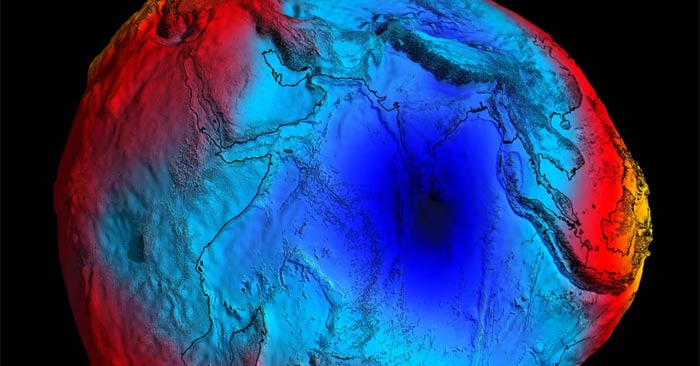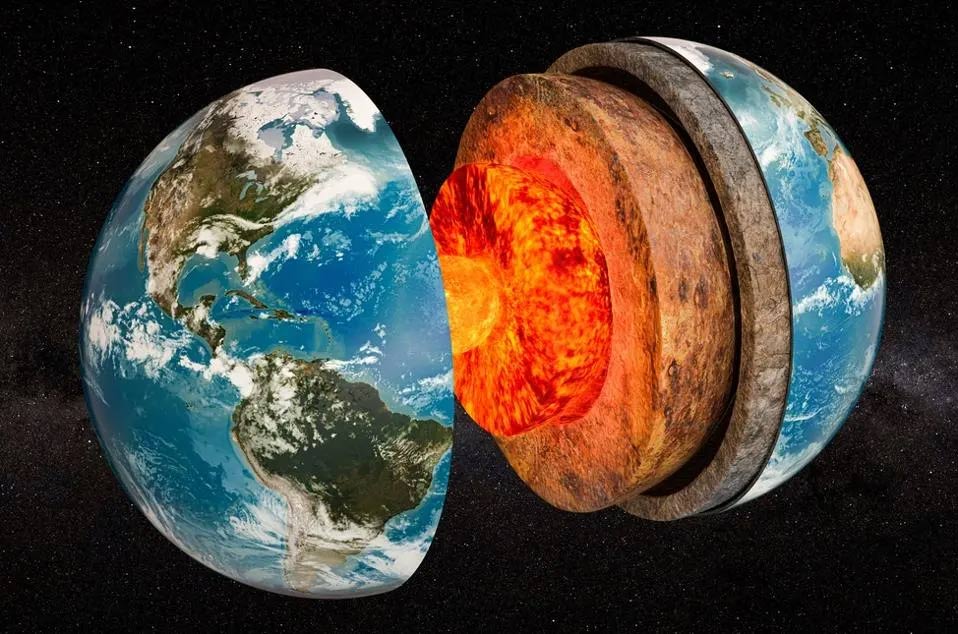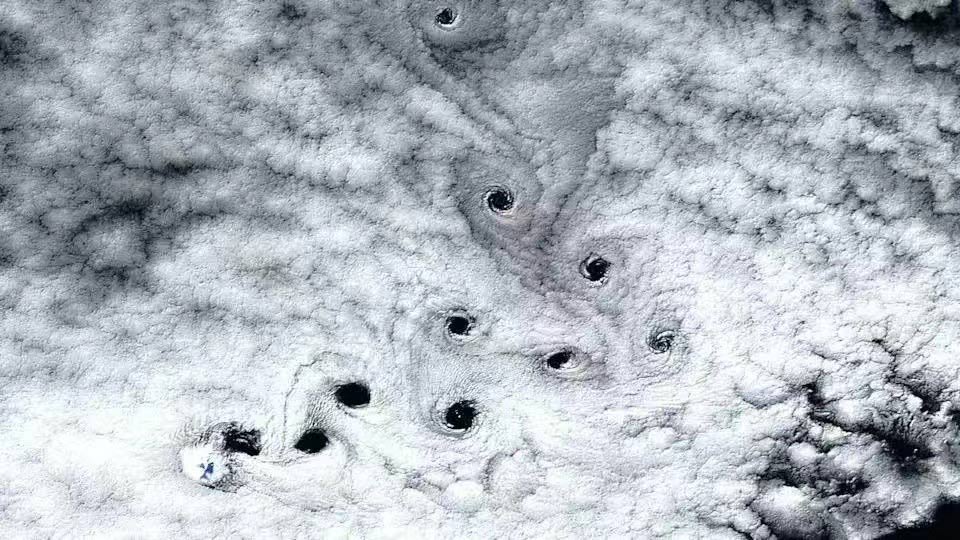What you need to know about the mysterious black hole in the Indian Ocean
This "black hole" was first discovered by Dutch geophysicist Felix Andries Vening Meinesz in 1948 and remains a mystery to this day. Here's everything you need to know about the mystery of the "black hole" in the Indian Ocean .

Decoding the mystery of the "gravity hole" in the Indian Ocean
Scientists have finally solved a long-standing mystery known as the Indian Ocean Geoid Glen (IOGL) — a large depression in Earth's gravitational field located south of the Indian subcontinent.
First discovered in 1948 by Dutch geophysicist Felix Andries Vening Meinesz, the area has puzzled researchers because gravity is significantly weaker here, and sea levels would be about 106 meters (328 feet) lower than the global average if not affected by currents and tides.
This new explanation comes from geodynamic simulations conducted by researchers at the Indian Institute of Science (IISc), Bengaluru, in collaboration with the German Research Centre for Geosciences GFZ.
The team used 19 mantle convection models to simulate the motion of Earth's tectonic plates and deep dynamics over the past 140 million years.
They concluded that the anomaly was caused by low-density magma plumes rising from the Large African Low Shear Velocity Province (LLSVP) - a giant structure deep in the Earth's mantle.
These plumes may have been triggered by ancient subducting plates from the Tethys ocean, (now gone) that once lay between India and Asia.
As India drifted north and collided with Asia, the geological shifts disturbed the mantle materials, leading to the upwelling of hot magma, which floated beneath the Indian Ocean.
This upwelling reduces the overall mass of the region, leading to a local decrease in gravitational strength, forming the observed geoid depression.
The Indian Ocean Geoid is unique in its scale and depth, the largest and deepest known gravity anomaly on Earth – and has existed for at least 20 million years.

Although similar low-slip zones exist under the Pacific Ocean, none have produced geoid anomalies of this magnitude, making the IOGL both a scientific oddity and an important clue to how mantle dynamics affect the Earth's surface.
This breakthrough has important implications for understanding not only gravitational variations but also mantle convection, plate tectonics and the thermal history of Earth's interior.
While the study offers a plausible, plausible theory, scientists note that this is not a definitive answer and further research is needed to fully understand why such unusual phenomena are rare globally.

Facts to know about gravity well in the Indian Ocean
- There are many low-density "gravity pits" around the planet, but the Indian Ocean geoid depression (IOGL) is the deepest—spanning 1.2 million square miles just off the southern coast of India and causing sea levels to drop 328 feet.
- A study conducted in May 2023 by scientists at the Indian Institute of Science and the GFZ German Research Center for Geosciences suggested that mantle plumes, similar to the blocks in Earth's mantle that create volcanoes, may be responsible for IOGLs.
- The researchers ran 19 supercomputer simulations to recreate Earth's seismic formation dating back 140 million years, six of which resulted in the formation of the IOGL and all of which showed magma flows existing within the mantle.
- These plumes were formed by the drift and eventual collision of the Indian subcontinent with Asia 40 million years ago, according to study co-author Attreyee Ghosh.
- The team estimates that this geoid depression formed about 20 million years ago.
You should read it
- black hole, white hole, deep hole
- 10 interesting facts about black holes in the universe (Part 2)
- 10 interesting facts about black holes in the universe (Part 1)
- Mysterious island inhabited by the 'stranger-eating' tribe in the Indian Ocean
- Discover a monster black hole 100,000 times bigger than the Sun, the second largest in the Milky Way
- Black force - a new force in the universe, becomes even more strange
 How Japan turns footsteps into electricity?
How Japan turns footsteps into electricity? The complex psychological mysteries of the mind
The complex psychological mysteries of the mind The strangest maritime mysteries, still unsolved
The strangest maritime mysteries, still unsolved 'Pharaoh's Curse' May Hide a Secret Anti-Cancer Compound
'Pharaoh's Curse' May Hide a Secret Anti-Cancer Compound Revealing a new creature that could change the definition of life
Revealing a new creature that could change the definition of life Shocking facts about the Trinity nuclear test
Shocking facts about the Trinity nuclear test